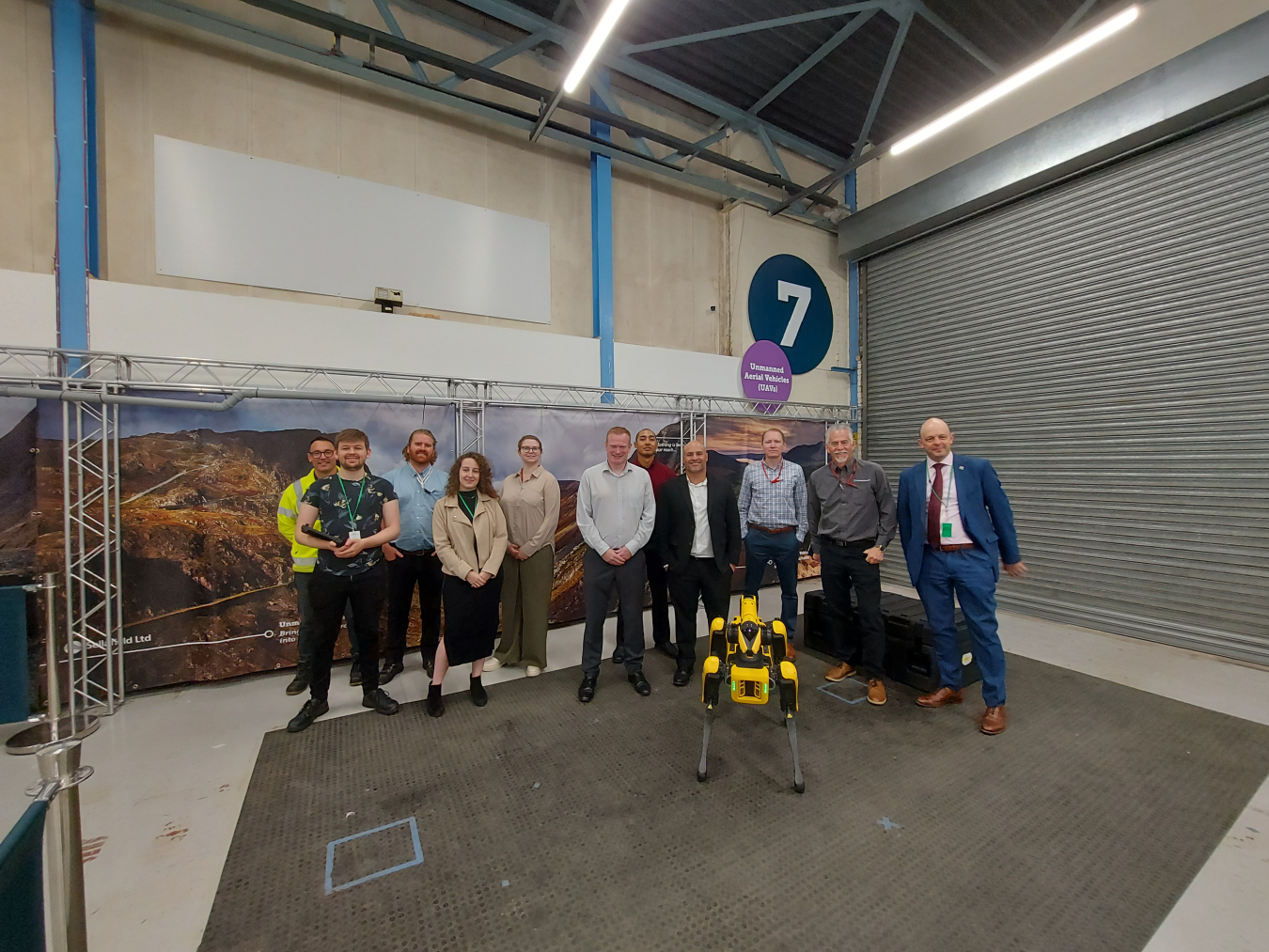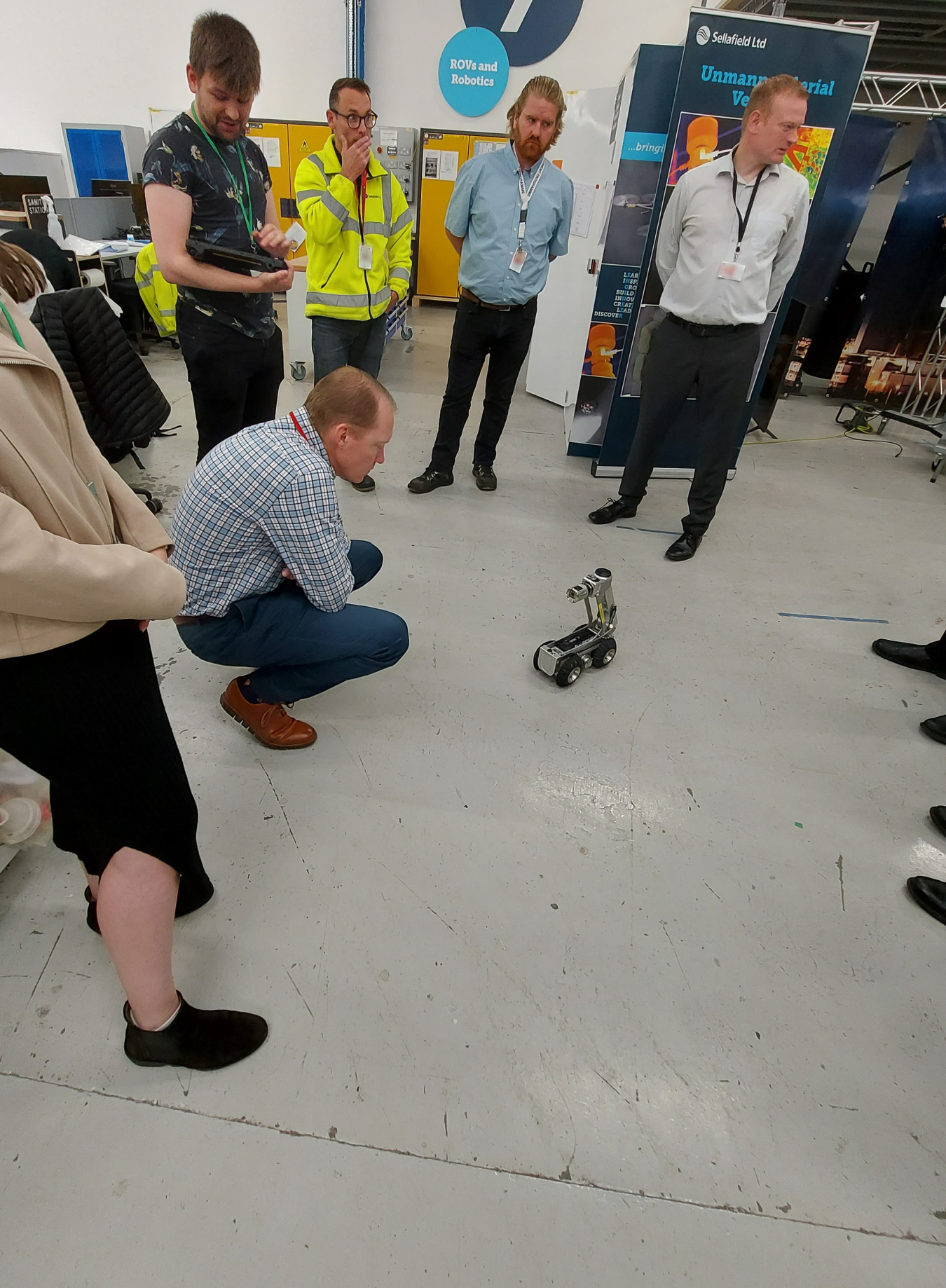At the Sellafield site on the coast of Cumbria, England, remotely operated submersible vehicles perform inspection and manipulation tasks in ponds where spent fuel is stored.
Office of Environmental Management
August 15, 2023
A team from EM and Sandia National Laboratories is pictured observing a demonstration of the Spot Robot at the Sellafield Engineering and Maintenance Centre of Excellence with Sellafield representatives. From left are Niall Paterson, Joshua Hudson, Luke Henley and Alice Nash, Sellafield; Ashley Furman, Longenecker and Associates; a Sellafield representative; Michal Rittikaidachar, Sandia; Jean P. Pabón, EM Technology Development Office; Jason Wheeler and Jake Deuel, Sandia; and Ed Matthews, Sellafield.
At the Sellafield site on the coast of Cumbria, England, remotely operated submersible vehicles perform inspection and manipulation tasks in ponds where spent fuel is stored.
A four-legged robot characterizes a contaminated area inaccessible to personnel and performs basic remediation tasks.
And a robotic-arm system for segmentation of decommissioned glove boxes is being evaluated along with unmanned aerial systems to perform surveying tasks as part of the cleanup by the United Kingdom’s Nuclear Decommissioning Authority (NDA), whose primary activities are nuclear waste processing and storage, and nuclear decommissioning.
Unique hazards in EM’s cleanup work increasingly demand such emerging technologies, including robotic systems that allow workers to perform work remotely. That’s why representatives with EM’s Technology Development Office and robotics subject matter experts from Sandia National Laboratories recently visited Sellafield to discuss how robotics, artificial intelligence and other emerging tools can be developed and used in nuclear cleanup operations.
“It was great to see how the Sellafield team has successfully implemented some of these technologies, and we look forward to future discussions and collaborations where we can leverage and mutually benefit our cleanup missions,” said Jean P. Pabón, EM Technology Development Office senior program manager.

This latest collaboration comes on the heels of a trilateral workshop focused on stakeholder engagement. A team of leaders from EM headquarters and cleanup sites traveled to London, U.K., to participate in the workshop with NDA and Canadian government representatives and impacted stakeholders. And late last year, EM’s Technology Development Office and Sandia employees were among a team that evaluated technology to improve the safety and well-being of EM’s workforce at the Florida Institute for Human and Machine Cognition in Pensacola.
During the most recent visit to Sellafield, the EM-Sandia team observed multiple robotic deployments and evaluations and discussed common successes and challenges associated with the technology maturation process.
They talked with developers and end users of the systems to better understand how the Sellafield teams worked together to mature and transition the systems to routine operations. The EM contingent also discussed their robotic development efforts and identified areas for future collaboration.
Jason Wheeler, a research and development robotics engineer at Sandia, noted the importance of such teamwork with international collaborators.
“Because the nuclear cleanup mission involves such unique hazards, it’s essential that we work closely with our international partners to learn from each other’s successes and failures in deploying emerging technology,” Wheeler said.
The EM-Sandia team expects to continue collaborative efforts with its U.K. partners.
To receive the latest news and updates about the Office of Environmental Management, submit your e-mail address.

